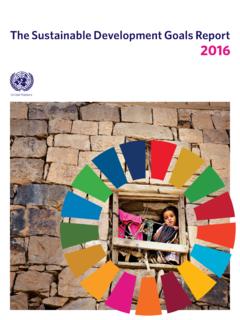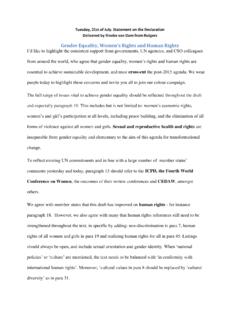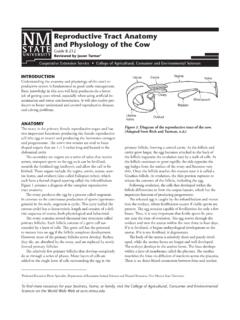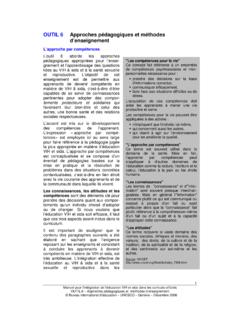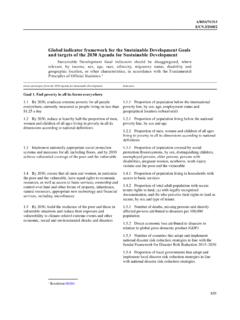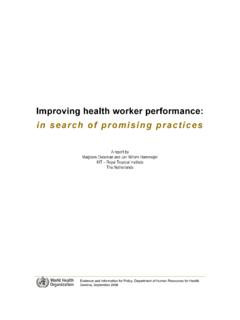Transcription of Training Manual for Gender Awareness/Sensitisation ...
1 - 1 - NLH/AKRSP HIGH ALTITUDE INTEGRATED NATURAL RESOURCE MANAGEMENT PROGRAM Training Manual for Gender Awareness/Sensitisation Workshop for Community Representatives Prepared by: Nazir Ahmad Gulcheen Aqil Ingrid Nyborg April 2002 - 2 - Training Manual for Gender Awareness/Sensitisation Workshop for Community Representatives 1 Introduction This Training Manual is an outcome of a joint research between Aga Khan Rural Support Programme (AKRSP) Baltistan and the Agriculture University of Norway (NLH) to cooperate on a combined programme of competence building and applied research on High Altitude Integrated Natural Resource Management. The prime aim of this institutional cooperation is to gain further insights about management of natural resources and their role in farmers livelihood systems.
2 The research also aims to enhance the capacity of AKRSP to work with community based institutions and organisations for sustainable management of natural resources, and strengthen knowledge-base of NLH researchers for development-oriented research, through providing knowledge which may be used in developing management and conservation strategies by both organisations as well as other similar development agencies. This research collaboration has been practicing in field for the last five years and Gender was and still is one of the main components of this research project. This has been using qualitative, social science approach to study the interdisciplinary issues of Gender , resource management, and food security.
3 In this regard, case studies were produced on several topics to explore the complicated social networks and dynamics involved in determining how women and men gain access to and manage their natural resources. This research project provided a deeper understanding to the involved researchers about complexities and differentiations in mountainous societies and sub-sections of the society. From the Gender perspective the research project reveals some interesting points on the subject. Based on the findings of this research component, this Manual has been prepared to use during the Gender Awareness/Sensitisation workshops for communities as well as AKRSP staff. Objective The main objective of this Manual is to provide guidelines for the Training while conducting Gender sensitisation and awareness workshops for community people as well as for development agencies staff.
4 The Manual as aims to use the results and experiences from the collaborative research into AKRSP s ongoing Gender and development activities. How to use the Manual This Manual can be used in different ways for different target groups both educated and illiterate community women and men, and NGO staff. Most of the conceptual explanations could be used for background information as handout and group reading. Urdu version of the Manual is for community workshops while English can be used for NGO staff and educated people. The Manual is for two-day Gender sensitisation/awareness workshop, however, with some reduction of exercises it also can be used for daylong workshops. The workshop could be started with a brainstorming exercise asking the participants what comes in their mind when they hear the word Gender , followed by explaining meaning of Gender and from WID to GAD approaches.
5 Later on key concepts will be explained briefly with specific examples. Afterward importance of Gender and development in the development process will be elaborated. After explaining the conceptual part, the matrixes, charts, pictures, stories, and cards will be used to give more insights to the participants. For day-long workshops some of excises can be skipped. For illiterate community participants, flip charts, pictures, and group discussion methods would be used. - 3 - 2 Meaning and Description of Gender concepts (Handout 1) Meaning What is Gender ? Gender is used to describe those characteristics of men and women which are socially determined, in contrast to those which are biologically determined.
6 The word Gender was used by Ann Oakley and others in the 1970s to emphasise that everything women and men do, and everything expected of them, with the exception of their sexually distinct functions (childbearing etc.) can change, and does change, over time and according to changing and varied social, economical, political, and cultural factors. People are born female or male, but learn to be girls and boys who grow into women and men. They are taught what the appropriate behaviour and attitudes, roles and activities are for them, and how they should related to other people. This learned behaviour is what makes up Gender identity, and determines Gender roles and responsibilities. Gender roles vary greatly from one culture to another, and from one social, political, and economic group to another within the same culture.
7 Why Gender is Important? Since the mid 1980s there has been a growing consensus that sustainable development requires an understanding of both women s and men s roles and responsibilities within the community and their relations to each other. This has come to be known as the Gender and Development (GAD) approach. The main objective of GAD is mainstreaming women s needs and perspectives into all activities. Mainstreaming acknowledges that all development operations have a Gender impact and do not automatically benefit men and women equally. Thus it is necessary to adopt GAD approach for development programmes to benefit both men and women, and also for sustainable development and positive impacts on the society as whole.
8 Why Gender Considers as Women s Empowerment? Although Gender and development includes both women and men, however, in most cases focus is given to only women. It is because of imbalance and unequal status of women in most of the societies where women do not have the same opportunities and personal freedom as men do. Therefore, there is a need to focus women compared to men. It is like two glasses, where one is half full and another is empty, thus the empty glass should get water first and when both glasses become equal then fill both. If someone tries to fill both glasses without noticing the level of water it won t work. Key Concepts (Handout 2) Gender Equality Gender equality refers to equal opportunities and outcomes for women and men.
9 This involves the removal of discrimination and structural inequalities in access to resources, opportunities and services, and the promotion of equal rights Equality does not mean that women should be the same as men. Promoting equality recognizes that men and women have different roles and needs, and takes these into account in development planning and programme. - 4 - Gender Division of Labour Sexual division of labour results from the social differentiation introduced by the relations between men and women that attributed activities and roles according to the person s sex. The specific tasks and activities were attributed to men and to women according to the socio-economic and cultural context. Both men women have multiple work roles.
10 These include: production, reproduction, essential household and community services, and community management and political activities. productive Role productive activities include all tasks which contribute to the income and economic welfare and advancement of the household and community. Both women and men perform a range of productive roles. Women s productive roles can include cash and subsistence farming (whether or not they control any income from their labour), care of livestock, foraging in forests, food processing for sale, cottage or home based industries, and waged/formal sector employment. reproductive Role reproductive activities are those activities carried out to reproduce and care for the household.

